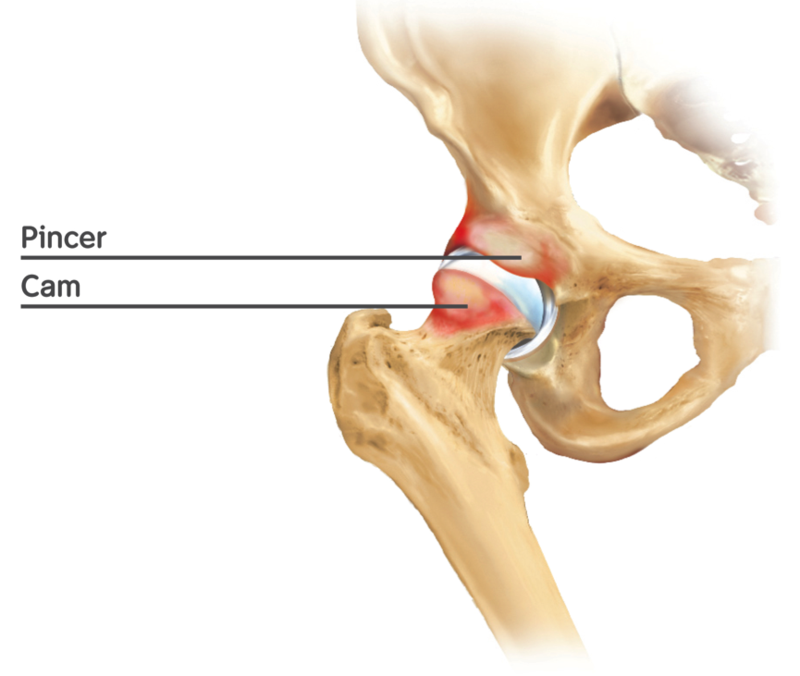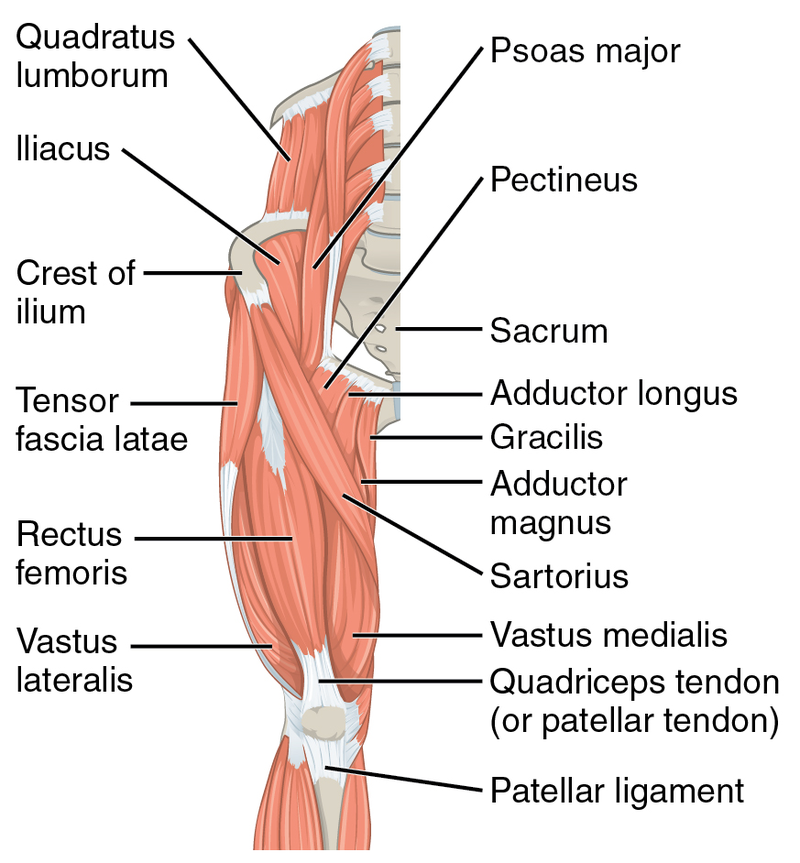Table of Contents
Hip Impingement
Hip Impingement, otherwise known as Femoroacetabular Impingement, is a condition in which there is abnormal wearing and/or contact between the head of the femur and the rim of the acetabulum (or the ball and socket joint of the hip). This abnormal contact can cause increased friction, pain, inflammation and with time can lead to degenerative change and decrease range of motion. Hip impingement will usually cause pain with prolonged periods of sitting and walking. Individuals may also experience pain during deep squatting movements.

Middle: Cam-Impingement of the Femoroacetabular Joint
Right: Pincer-Impingement of the Femoroacetabular Joint

Diagnosing Hip Impingement
Diagnosis for hip impingement should be performed by a trained professional to rule out other pathologies that may exist. The common tests that are used to diagnose Hip Impingement are as follows.
- FADIR Orthopedic Test: Flexion, adduction, and internal rotation test for hip impingement
- X-Rays Imaging: Anteroposterior view and Modified Dunn view of the hip
- Magnetic Resonance Arthrography of the hip joint
Differential Diagnosis for Hip Impingement
- Avascular necrosis of femoral head
- Cancer
- Bursitis
- Inguinal or femoral hernia
- Infection arthritis
- Osteoarthritis
- Intraarticular loose bodies
- Muscle strain
- Lumbar spine pathology
- Pelvic pathology
Treatment for Hip Impingement
Treatment for Hip Impingement should always begin with conservative and non-invasive methods such as Chiropractic care, Physical Therapy, or a combination of both. For individual where conservative care fails, surgical intervention may be required.
Banded Hip Mobilization for Hip Impingement
- Secure a heavy band to a wall or immovable object
- Begin exercise by placing band around the affected proximal femur as close to the groin as possible
- Walk out to tighten the band and assume a lunge position
- Begin internally rotating the femur and hold this position for 5-10 seconds
- Now externally rotate the femur and contract the gluteal muscles
- Repeat the internal and external sequence for 10 repetitions
Hip Flexor Strain
Hip flexor strain is an overuse stretching or tearing of one or more of the hip flexor muscles. The hip flexors are a muscle group that act to flex or raise the femur to the torso or abdomen. Common causes of hip flexor strain are overuse from cycling, running, jumping, or activities involving forceful kicking movements such as soccer or martial arts.
Hip Flexor Muscles
- rectus femoris
- iliacus
- psoas major
- psoas minor
- sartorius muscles

Psoas Major
Psoas Minor
Iliacus
Rectus Femoris
Sartorius
Types of Hip Flexor Strains/Tears
- Grade I Tear: minor tears where only a few muscle fibers are damaged
- Grade II Tear: moderate amount of muscle fiber is damaged with possible loss of function in the hip flexor
- Grade III Tear: muscle fibers are completely torn, walking is possible with a limp, moderate to severe loss of hip flexor function
Diagnosing Hip Flexor Strain
Diagnosis for hip flexor strain should be performed by a trained professional to rule out other pathologies that may exist. The common tests that are used to diagnose Hip Flexor Strain are as follows.
Treatment for Hip Flexor Strain
Conservative measures are used for treating hip flexor strains. Conservative measure exist within chiropractic and physical therapy establishments.
Common treatments for Hip Flexor Strains
- Instrument Assisted Soft Tissue Mobilization
- Myofascial Release Technique
- Isometric Exercise
- Hip flexor strains should not be treated with active or passive stretching, stretching may worsen the injury and delay healing time.





Thanks so much for this!!
You are very welcome! Glad to help!